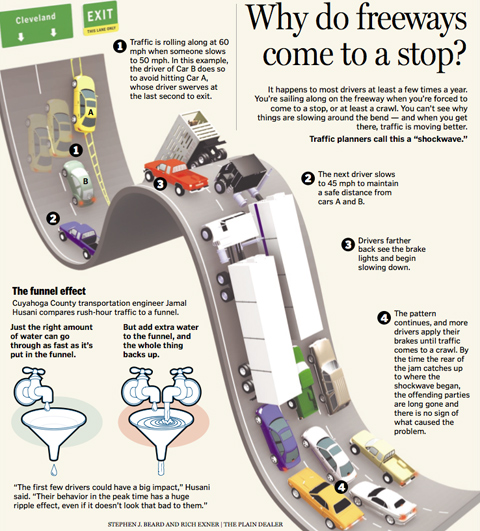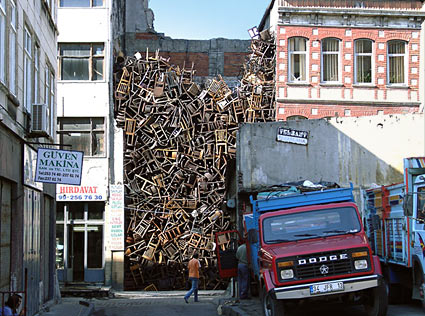In the past few years, those of us who have been engaged in a wanderlust around Web2.0 have gone through a quick evolution of social networking platforms that included the big 3: MySpace, Facebook, and Twitter. The archetypal pattern that has developed through this continuum is telling in many ways save one - what's next?
The MySpace world was, if nothing else, a simple way for people to get the concept of adding friends and really pushed the notion of "friends" as currency. It was at this time that the first serious criticisms started to arise about people adding friends to simply build their lists. Bots were written to invite thousands upon thousands of friends. And what MySpace did better than anyone else at the time, and perhaps its remaining effective residual today, was the amalgamation of topic-specific pages for music, comedy and the like. When I first joined MySpace and created a music page, I saw it as the great equalizer in web music because my page looked exactly like Radiohead's or Beyonce's or an indie band from across town.
The interface to tweak one's page was far from elegant or intuitive however. The results often looked like a crazy mashup of early graphic browsings in Mosaic or Netscape Gold where people were experimenting in animated GIFs, frames, and blinking marquee text. In the end, MySpace started to fall under the weight of its own interface and clutter. Change was needed in terms of ease of use, customization, and intergration.
Facebook came into immense popularity through a mashup of the widgets available on MySpace, the complete lack of ability to change the basic page look, and the best aspects of old standby Classmates. By mandating a standard layout and inability to change color scheme, Facebook retained a sense of elegance that may have been achieved more through perception than execution. When you don't allow people to add hideous looking backgrounds or customize their html, things go smoother in the end. What Facebook really did right though, was to allow itself to become a hub for all social networks. You could update status, upload photos, bookmark and digg and everything would appear as an action on your Facebook status if you wanted it to. Facebook also allowed highly customizable privacy settings which drew millions of people in who may have been afraid to commit to online networking in any previous fashion.
The Facebook brand is now the largest in the world with a readily adopted cross-culture and demographic. With over 200 million users and countless pictures and video one has to imagine that there must be some success in the ad placements on your profile or I can't find the monetization. While the number of "friends" on Facebook was important, consideration was given to being more selective in that much more personal information was potentially available.
Now that the explosion of Twitter (over 1300% in the past year) has blown through the roof, patterns are starting to become discernable about what people want in a social network. Twitter had been called microblogging for a period of time, but the term has ended up being insufficient. Twitter is a social network, yet its true power is derived from its open API which has allowed third party applications to aggregate the Twitter stream. Twitter is simple - status updates, 140 characters or less. No one really cares what your Twitter profile looks like. People only care about the feed. Twitter is the TV Guide of the Internet.
Let's examine some of the continua involved here:
-
Design: MySpace = clunky and gaudy, Facebook = busy but streamlined, Twitter = mundane but irrelevant
-
Ease of use: MySpace = learning curve to do basics and customize, Facebook = easy to do basics, widget-based permission, Twitter = a chimp could use it.
-
Content Delivery: MySpace = less about message than environment, Facebook = understandable content, but an assault of it, Twitter = you've got 140 characters, learn how to shrink your urls.
-
Portability: MySpace = although you could get content to MySpace from without, not so easy the other way around, Facebook = could push content from within outwards, but became much more satisfied in trying to be the content hub, Twitter = is becoming more and more about portable content and nothing else.
And, to summarize, MySpace is dying, Facebook is a monster, and Twitter is exploding.
Seeing as we have gone through this evolution in the past few years alone, the only sure thing is that something else will come along and be the next social network of choice of geeks for two years before anyone else adopts it. What will that platform look like?
What Twitter knows, and Facebook is quickly learning, is that the key is in the API. I never used Twitter regularly until Tweetdeck. Tweetdeck allowed Twitter to become more than feeds of the followed, but a social news aggregator. Try going into Tweetdeck and typing in a person, place or thing in the news and you'll end up with thousands of bits of information from around the world. A Twitter news feed is like the hive mind, unparsed wiki. But as much as I'm praising the upstart Twitter, there is a harsh truth that will have to be faced as the service moves forward. An open API means the site and profile become essentially useless. The ability of Facebook to monetize through profile ads is far less likely to work on Twitter.
While some would like to believe Friendfeed is the next step in the evolution, I would argue that the cosmetic appeal of Friendfeed is severely lacking and there is a valid reason for people loving their compartmentalized Facebook widgets. The definitive social network of the future will need to combine the streamlining and ease of use with some of the inescapable features that a mass appeal service must have to cross demographics.
Hence, I present The Anatomy of the Next Great Social Network
- Web page used only for modifications, all networking occurs through standalone apps.
- Status updates, kept 160 characters or shorter and transferable via an open API.
- Fully functional mobility apps for phone and portable devices.
- A portal (at least) to pictures and videos which people love to have available.
- A friend compare and suggest feature based on existing friends and status update tags.
- A drop dead simple sign up and start up process.
The model that laconi.ca is pushing of the open source social network may not be too far off. An app like Tweetdeck could be made to have a pop-up "groups" column that could aggregate everyone you follow by an interest or common workplace. The app could sort your followers by category and allow you to do the same for a friends followers. The apps will all be different, but the network will simply be differing flavors of content that can be aggregated.
Let's face it, it all revolves around new content which is most often status updates. The ability to aggregate, parse and present the snippets of wisdom or stupidity of everyone you follow will be the key determinant of success. The customizability will determine which app wins the platform war. The question remaining, is will the architects of the network allow others to profit from using their backbone in an independent application. Just as productivity applications are moving into the browser, social networks must start to move away from the browser into their own space. Such content is no longer a function of html, but rather Java, Python, and Air.








